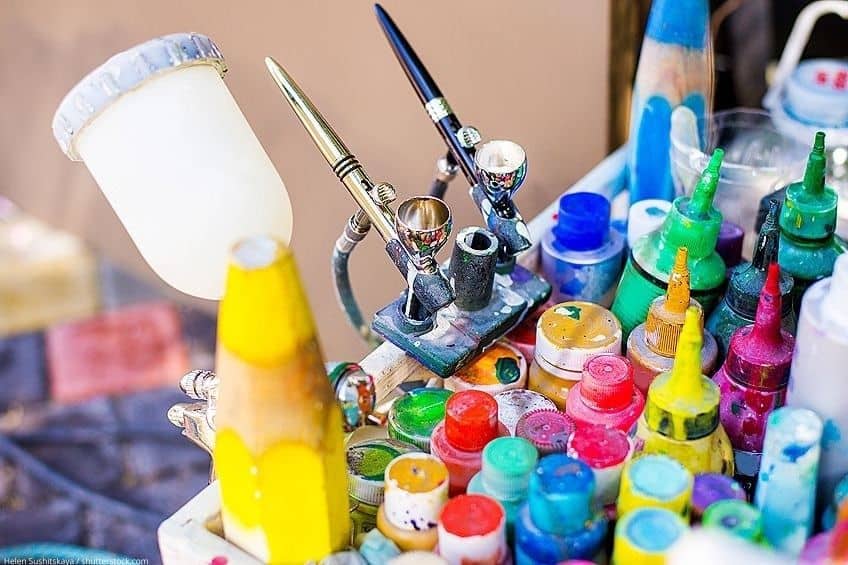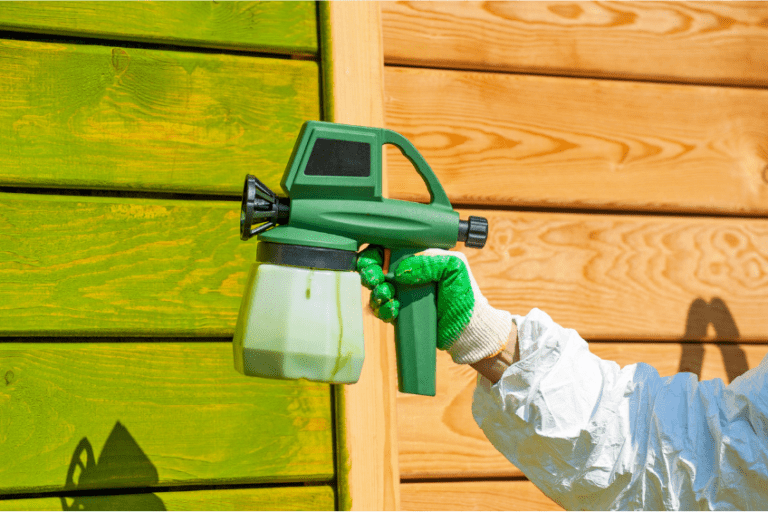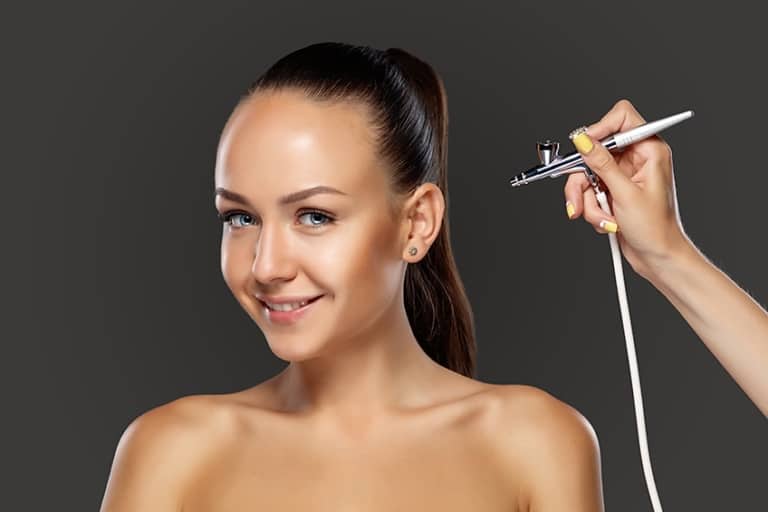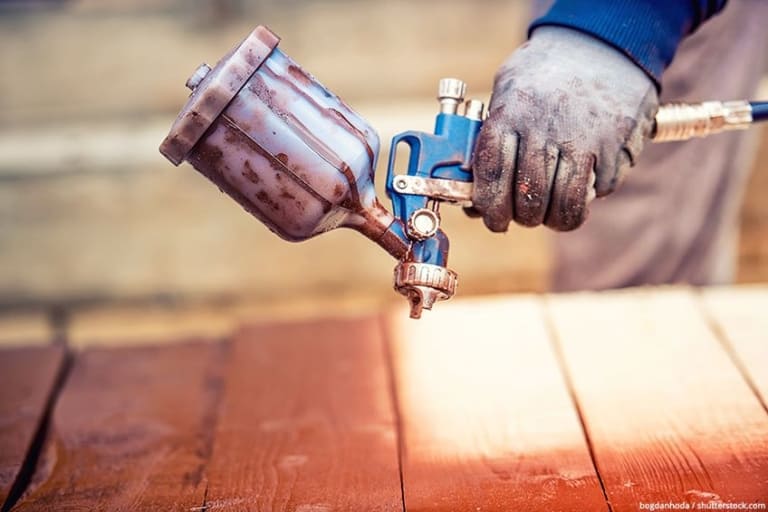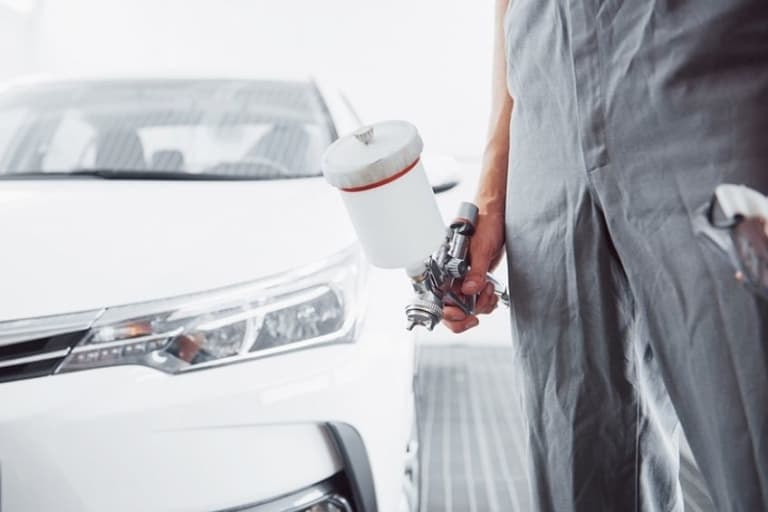Thinning Acrylic Paint for Airbrush – Your Guide to Airbrush Paint Thinning
Disclosure: There are some affiliate links below and I may receive commissions for purchases made through links in this post, at now additional cost for you.
Acrylics are available in different forms and can either be opaque or transparent. This is why airbrushing with acrylic is a versatile option. Acrylic paint is also considered to be safe to use because it is water-based and it does not emit any fumes. This also makes it safe to use indoors with little ventilation. Artists recommend this paint because it has the ability to add depth and clarity to their work. However, mixing acrylics for airbrushing needs to be done in order to achieve the right consistency for spraying. We have outlined the steps to do this below.
Table of Contents
- 1 Why Should You Thin Airbrush Paint
- 2 How Finish Affects the Thinning Ratio
- 3 Is it Important to Thin Your Airbrush Paints?
- 4 Thinning Acrylic Paint
- 5 Be Careful When Thinning Acrylic Paint for Airbrushing
- 6 The Best Acrylic Paint Thinners for Airbrushing
- 7 Thinning Solvent-Based Paints
- 8 Frequently Asked Questions
Why Should You Thin Airbrush Paint
Airbrush paint is not always 100% ready to use, even though it can be labeled as such. At times it is a good idea to thin down your paint a little before using it with your airbrush. This depends on a few factors and it will minimize the time you might spend tinkering with the airbrush, trying to get it to work before using it.
Thinning or reducing your paint before running it through an airbrush, ensures that you get better spray patterns. This is because the paint that will be coming through the airbrush will be thicker. However, paints are different and should be treated differently.
You have to consider the brand of the airbrush you are using and the intended use of the paint, to determine whether you need to thin the paint down or not. In most cases, thinning the airbrush paint improves the function of the airbrush when operating and handling the paint.
How Finish Affects the Thinning Ratio
Acrylic paints offer different finishes. These include opaque, transparent, pearl, and candy colors. The finish of the paint you are using impacts the thinning that is required by that paint. Transparent paints have the ability to allow light to pass through them, making them brighter. While on the other hand, opaque paints have the tendency of blocking out the light completely. Opaque paints have more pigment coverage which is why they tend to be thicker.
Opaque paints have to be reduced much more so that they can pass through the airbrush. If you opt for transparent paints, then the process of reducing them will be minimal. This is because transparent paints are thinner than opaque paints.

Is it Important to Thin Your Airbrush Paints?
Some paints do not require thinning before using them with an airbrush. However, these airbrush models should have a high psi for them to work properly. A high psi will enable you to get your desired spray pattern without reducing the paint. If you use other paints without thinning them first, they may clog your airbrush. Besides clogging, they will result in inconsistent spray patterns. The airbrush compressor will end up being affected since it has to overwork, spraying thicker paint.
Thinning Acrylic Paint
The best substance for thinning acrylic paints is distilled water or an artist’s paint thinner. You should take a few things into consideration when determining the consistency of your airbrush in atomizing paint. These are the liquid nozzle size, needle size, airbrush make, and pressure.
Most importantly, consider the airbrush nozzle size. It is advisable to use a 0.5mm nozzle when using thicker paints. Always make sure that you do not reduce your paint too excessively, as this might compromise the colors. In most cases, too much thinning will prevent the paint from sticking to the surface. Consult the manufacturer`s datasheet to follow the instructions related specifically to the paint. Always experiment first to determine the consistency of the paint before thinning it. This will help you in understanding how much thinning the paint requires. Below are some of the steps to follow when preparing acrylic paint.
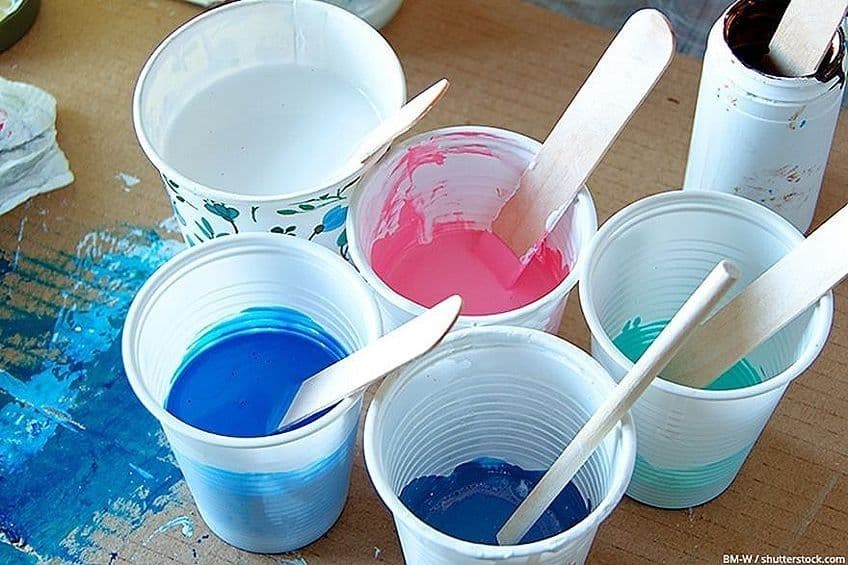
Instructions: Preparing Acrylic Paint for Airbrushing
Step 1
The first step is to purchase the acrylic paint suitable for airbrushing. In most cases, these paints come with an acrylic airbrush thinner. If not, these acrylic airbrush thinners can be found in most paint shops. Always mix according to the brand’s instructions because paints are different.
Step 2
Thin the acrylic paint using a mixture of equal parts of acrylic and water. Make sure you mix the proper quantities very well. Put the mixture in a lidded container. Briefly, shake the mixture for a few minutes before use. Or you can opt for a larger measuring cup with a mini whisk. You can purchase a mini-whisk in most department stores in the homeware section. The whisk is best suited for mixing the paint in the measuring cup.
Step 3
Using rubbing alcohol or Windex is a great way to thin your acrylic craft paint. These are available in most hobby and craft shops. They are very affordable too. You can also use them for airbrushing. Use the same mixture consisting of equal amounts of Windex or rubbing alcohol, and then spray using the airbrush. Rubbing alcohol or Windex helps the paint to stick better to surfaces.
Metallic Acrylic Paint
You can also airbrush with metallic acrylic paint after thinning it with the same steps as above. This solely depends on the metallic flake size in the paint. Cheaper craft acrylic contains a very small flake that can be used very effectively. Shake or whisk the paint mixture very well before use. This is because paint pigments have a tendency of settling at the bottom of the container.
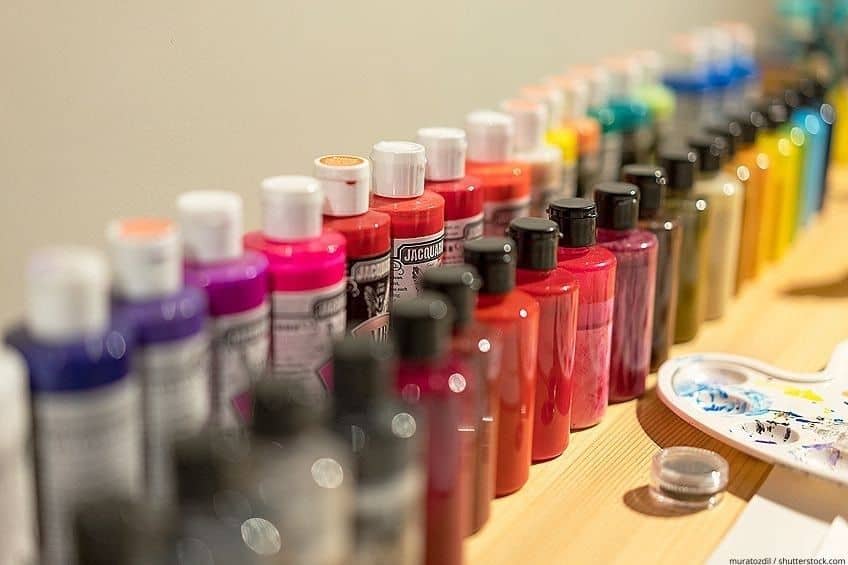
Be Careful When Thinning Acrylic Paint for Airbrushing
Acrylic paints clog at times because of the build-ups that settle at the opening of the nozzle. These build-ups can cause the paint to splatter. Always flush the airbrush from time to time to avoid this kind of situation. You should work in a well-ventilated area when using an alcohol-based solvent for thinning acrylic paint. This is because the alcohol emits odors and fumes.
The Best Acrylic Paint Thinners for Airbrushing
There are a number of methods to thin acrylic paint for airbrushing. You can use a manufactured paint thinner, distilled water, or a homemade thinner. The following are some of the best ways you can opt for when thinning your acrylic paint.
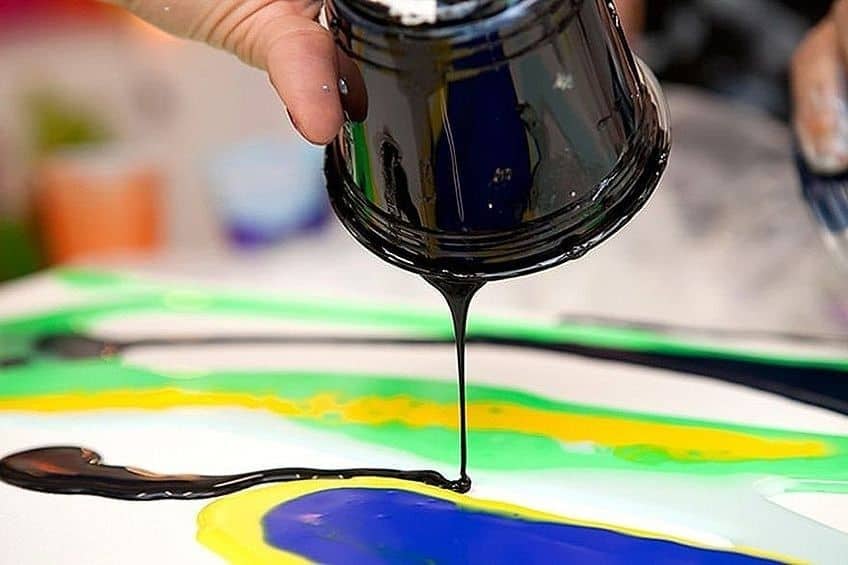
Manufactured Acrylic Paint Thinner
Most paint manufacturers offer paint thinners that are especially suited and formulated to work with their paints. For best results, it is advisable to buy a thinner that has the same brand as the paint you will be using. You have to follow the mixing instructions as stated by the manufacturer to avoid problems when combining the paint and thinner.
Proper research is required before you settle on purchasing any type of thinner. Always opt for 5-star rated products to get the best results. The technical data sheet (TDS) from the manufacturer can also assist with the best information on the products. The following are a few of the best options you can choose from.
VALLEJO Airbrush Thinner (200ml Paint)
This 200ml bottle is suitable for liquid acrylic paints. You can dilute it without losing the consistency and ability of the paint to stick to most surfaces. It works incredibly well with a wide variety of acrylic paints. It is advisable to use this thinner in a well-ventilated area since it does produce fumes. This thinner is best suited for either airbrushing or hand painting. The consistency of the thinner is very smooth and suitable for any airbrush. This also makes the process of cleaning the airbrush easier afterward.
- Ideal for model air and liquid acrylic paints
- Dilutes without any loss of color adhesion
- Maintains great durability and consistency in the paint
Pros
- It is highly durable
- Can be diluted without losing color adhesion
- Specially formulated for acrylic airbrush thinning
- Easy to mix
- Makes it easy to clean the airbrush after use
Cons
- Produces pretty strong fumes
CREATEX COLORS High-Performance Reducer
This is a water-based thinner that can be used with a lot of Createx Color paints without any problems. It has the ability to thin water-based paints for a smooth airbrush spray performance. It proves to be tougher than sandpaper and cannot be scratched off so easily. However, be cautious of your mixing ratios because paints are different. Mixing ratios that work for a particular paint might not work for the next paint.
- A premium reducer for thinning water-based paint
- Non-reactive and easy to mix
- Suitable for use with all Createx Colors paints
Pros
- Non-reactive
- Less drying time
- Minimal tip-dry
- Seals acrylic paints perfectly
- Easy to mix at different ratiors
- Water-based for safer use
Cons
- More expensive than rubbing alcohol which does a similar job
Homemade Airbrush Thinner
Did you know that the easiest and cheapest thinner is one that you can make yourself? This is because paint thinners or paint reducers can be quite expensive on the market. A homemade thinner might be the best way to go since airbrush cleaners are also expensive.
The process is very easy because most of the ingredients are readily available in our households. If you opt for this choice, you can choose your preferred recipe to use for the best results. Most of the recipes available are best suited for water-based paints only. These recipes must not be used for solvent-based paints.
Recipe 1
- 5 drops of Glycerin
- 1 cup of Rubbing Alcohol (99%/91%)
- 4 cups of Distilled Water
- 1 cup of FANTASTIK All-Purpose Cleaner
Recipe 2
- 75% Distilled Water
- 25% FANTASTIK All-Purpose Cleaner
Recipe 3
- 1 cup Glycerin (for every 50ml of paint)
- 2/3 cups Distilled Water
- 1/3 Isopropyl Alcohol (99%)

Distilled Water
You can also use distilled water to thin your paint. However, distilled water is not as effective as a store-bought reducer or home-made reducer. Water on its own does not contain ingredients required for drying and for adding fluidity to the airbrush paint. These ingredients are found in homemade and store-bought thinners.
Water is your best option if you are looking for a cheaper way. It is cost-effective compared to other options. You have to opt for distilled water specifically since tap water is not suitable. This is because tap water consists of impurities that can negatively affect the paint composition.
Airbrush Acrylic Medium
Airbrush acrylic medium is also another option that you can use to thin your paint. The best thing about acrylic mediums is that you can either use them on their own or combine them with one of the options listed above. The acrylic medium is thinner than the acrylic paint, so it is usually most suitable to use on its own. However, you have to be extra careful when using only the reducer with the acrylic paint as you might end up under-binding the two.
Under-binding usually results from reducing the paint too much. This will provide you with the wrong finish since the actual bind that holds the paint pigment particles together would have been affected. The acrylic paint will not be able to bond with your desired surface. You can prevent the situation of under- binding by adding an acrylic medium to your paint. You should do this as soon as you add the reducer. You can use either of these two options:
GOLDEN ARTIST COLORS Airbrush Paint Medium
It is perfect for creating a paint mixture with the right amount of viscosity suitable for airbrushing. Golden Artist Colors Airbrush Medium is mostly used with fluid acrylics to create smooth fabric paint. It also doesn’t require any heat setting.
- Thins fluid acrylic paints for spraying
- Achieves the perfect airbrushing viscosity
- Reduces clogging and tip build-up
Pros
- Does not require heat-setting
- Makes the paint durable and smooth
- Offers great value for money
- Formulated for the perfect airbrush consistency
Cons
- Does not require much water, which is not ideal for all acrylics.
LIQUITEX Professional Airbrush Medium
This medium is specifically designed for thinning acrylic colors, making them suitable for airbrush painting. This airbrush medium has been formulated for easy use, so you don’t have to worry too much when mixing it. This product from Liquitex will help to inspire your creativity, making your painting experience more enjoyable at every level. It also works for decreasing clogging and paint build-ups.
- A liquid medium with an acrylic polymer
- Specially formulated for the perfect airbrush consistency
- Can also be used with a brush
Pros
- Very easy to use
- Offers great value for money
- Adds a beautiful sheen to paintings and crafts
- Specially formulated for the perfect airbrush viscosity
- Works well with all acrylic paints
- Helps to prevent clogging and paint build-up
Cons
- A more expensive medium
- It may affect the durability of the paint
Thinning Solvent-Based Paints
If you are using a solvent-based paint, it is advisable that you use a reducer that has been specifically recommended and formulated for that particular paint. This is because many errors occur by using mismatched chemicals from different manufacturers. It is up to you to do the necessary research before buying a particular solvent-based paint.
Always remember that solvents contain a lot of chemicals, and these chemicals can be harmful to health if they work against each other. This will also adversely affect the finish of your paint. It is advisable to follow the technical data sheet (TDS) or safety data sheet (SDS) for a clear and better understanding. Customer reviews are also a good option to look at before buying your preferred choice of solvent-based paint.
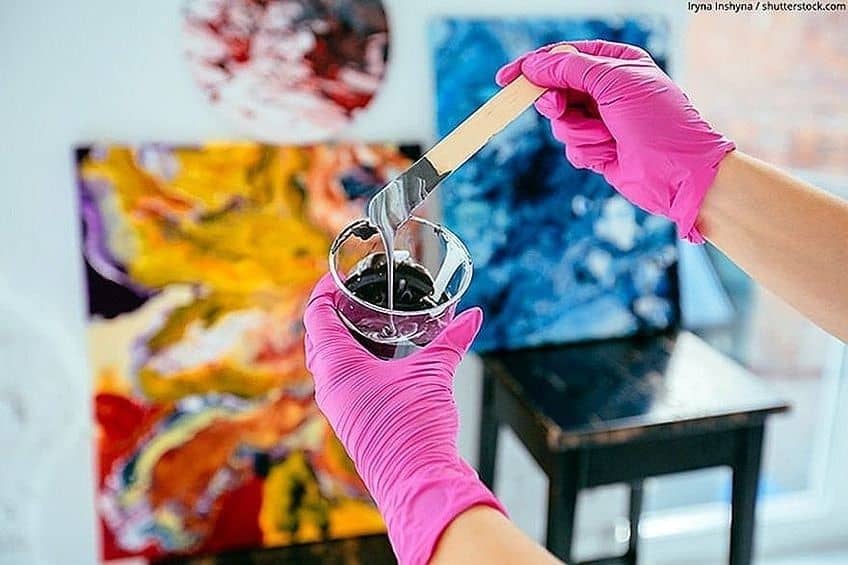
Frequently Asked Questions
Can You Use an Airbrush Cleaner Instead of a Paint Thinner?
Certain airbrush cleaners can be used as paint thinners. However, you should make sure that you are working in a well-ventilated area when using this product. You should also wear a protective mask for safety.
How Thin Must Airbrush Paint Be?
Different colors and brands require different thinning ratios. Always begin with a thinning ratio of 1:1, and increase the thinning ratio as required. The best option is to aim for thinner paint rather than thicker paint. This is because you can always apply multiple coats to the thinner paint.
Is Airbrush Thinner the Same as Paint Thinner
Airbrush thinners can actually thin the paint. Most companies do not make color thinners for paint extenders, but rather the product they make is more transparent. You can also opt for a flow improver to increase the flow of your paint and also to avoid the tip from drying.
If you plan on painting with an airbrush, then you will most likely have to thin down the paint to achieve the right consistency. Our article should have covered everything you need to know about doing this. We hope that you found the right product and method, and we wish you loads of fun with your airbrush painting ahead!

